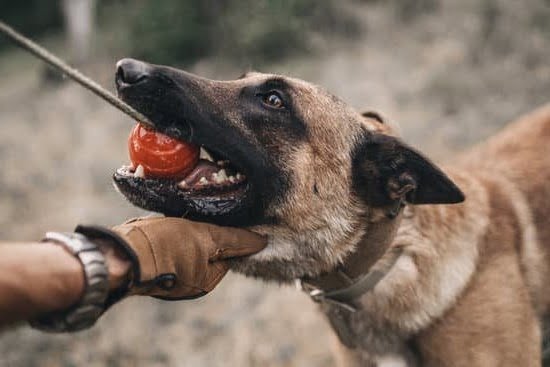Herding dogs have been bred for centuries to work alongside humans, using their innate instincts and skills to herd livestock. But did you know that these intelligent and hardworking dogs can also make excellent pets? In this article, we will explore how to train a herding dog to become a well-behaved and happy member of your family.
When it comes to herding dogs, it’s important to understand their unique characteristics and needs in order to provide them with the right training and care. These breeds are known for their high energy levels, instinctual herding behaviors, and intelligence. To properly train a herding dog as a pet, it is crucial to tap into their natural talents while providing adequate mental stimulation and physical exercise.
Choosing the right breed is the first step towards successfully training a herding dog as a pet. Different breeds have different temperaments, energy levels, and exercise requirements. It’s important to consider factors such as your lifestyle, living situation, and commitment level before bringing home a herding dog. By selecting a breed that aligns with your needs and preferences, you can set yourself up for success in training and raising your four-legged companion.
In the following sections of this article, we will delve into the various aspects of training a herding dog as a pet. From creating a stimulating environment at home to teaching basic obedience commands, harnessing their natural instincts for specific training tasks, addressing challenging behaviors that are unique to herding dogs, socialization in different environments, maintaining their overall health through proper nutrition and grooming – we will cover it all.
So let’s dive in and discover how we can nurture a happy and well-trained herding dog together.
Choosing the Right Herding Dog Breed
When considering adding a herding dog to your family, it is essential to choose the right breed that will fit your lifestyle and meet your expectations. Here are some factors to consider when selecting a herding dog breed:
- Size: Herding dogs come in various sizes, from small breeds like the Pembroke Welsh Corgi to larger breeds like the Border Collie. It is important to consider the space available in your home and whether you have enough room for a bigger dog or if a smaller breed would be more suitable.
- Energy Level: Herding dogs are known for their high energy levels and need plenty of physical exercise and mental stimulation. Some herding breeds require more exercise than others, so it is crucial to choose a breed whose energy level aligns with your lifestyle.
If you are an active individual who enjoys outdoor activities, then a higher-energy herding breed might be a good fit for you. However, if you prefer a more laid-back lifestyle, there are also lower-energy herding breeds available. - Training Needs: Herding dogs are highly intelligent and require regular training and mental stimulation. However, different breeds may have different training needs and aptitudes. For example, Border Collies are widely regarded as one of the most trainable dog breeds due to their intelligence and eagerness to please their owners. On the other hand, Australian Shepherds may be more independent thinkers and may require innovative training methods.
Taking these factors into consideration will help ensure that you choose a herding dog breed that is compatible with your lifestyle and meets your expectations as a pet owner. Remember that each breed has its own unique qualities and characteristics, so it’s essential to research thoroughly before making your decision.
| Factor | Considerations |
|---|---|
| Size | Available space in your home |
| Energy Level | Your activity level and preference for outdoor activities |
| Training Needs | Your willingness and ability to provide regular training and mental stimulation |
Preparing Your Home for a Herding Dog
Creating a safe and stimulating environment is essential when preparing your home for a herding dog. These intelligent and active breeds require mental and physical stimulation to prevent boredom and the development of destructive behaviors. Here are some important factors to consider when setting up your home for a herding dog:
- Secure Your Property: Herding dogs have a strong instinct to chase and herd, so it’s crucial to ensure that your property is secure. Check your fences for any gaps or loose areas where your dog could escape. Consider using reinforcement materials such as wire mesh to prevent digging or jumping over the fence. It’s also advisable to create a designated space in your yard where your herding dog can safely play and exercise.
- Provide Mental Stimulation: Herding dogs are highly intelligent, so mental stimulation is just as important as physical exercise for their overall well-being. Set up interactive toys such as treat-dispensing puzzles or Kong toys filled with treats or peanut butter to keep them engaged and entertained. You can also consider hiding treats around the house or teaching them new tricks to challenge their problem-solving abilities.
- Create Exercise Opportunities: Herding dogs have abundant energy, so regular exercise is vital to prevent restlessness or behavioral issues. Set aside time every day for activities such as long walks, runs, or playing fetch in the park. Consider incorporating activities that allow them to use their natural instincts, such as agility training or participating in herding trials.
In addition to these factors, it’s important to remove any potential hazards from your home that could pose a danger to your herding dog, such as toxic plants or household chemicals that are within reach. Providing a variety of chew toys can also help redirect their natural urge to nip or bite onto appropriate items.
By creating a safe and stimulating environment in your home, you are setting the foundation for a happy and well-adjusted herding dog. Remember to be consistent with their training, provide plenty of mental and physical exercise, and offer lots of positive reinforcement to nurture a strong bond with your herding companion.
Establishing Leadership and Building Trust with Your Herding Dog
One of the key aspects of training a herding dog as a pet is establishing leadership and building trust with them. Herding dogs are known for their high intelligence and strong work ethic, but they can also be independent and strong-willed. Therefore, it is important for owners to establish themselves as the leader in order to have a successful training experience.
To establish leadership with your herding dog, it is crucial to set clear rules and boundaries from the start. Consistency is key when it comes to training any dog, but it is especially important for herding breeds who have a natural instinct to follow orders.
This means enforcing rules consistently and not allowing any exceptions. For example, if you do not want your herding dog on the furniture, be sure to enforce this rule consistently and do not allow him on the furniture sometimes but not others.
Building trust with your herding dog is equally important. These dogs are highly sensitive to their owner’s emotions and can pick up on any lack of confidence or trust. They thrive when they feel secure in their relationship with their owner.
Positive reinforcement techniques such as praise, treats, and rewards will help build trust between you and your herding dog. Additionally, spending quality time together through play sessions or engaging in activities that tap into their natural instincts (such as agility or obedience trials) can strengthen the bond between you.
Establishing leadership and building trust with your herding dog sets a solid foundation for successful training. When your dog trusts you as their leader, they will be more eager and willing to learn from you. By setting clear rules and boundaries while also nurturing that bond of trust through positive reinforcement techniques, you can create an environment where your herding dog feels confident in following your lead.
| Establishing Leadership | Building Trust |
|---|---|
| Set clear rules and boundaries | Use positive reinforcement techniques |
| Enforce rules consistently | Spending quality time together |
| Provide structure and consistency | Create a secure and trusting relationship |
Basic Commands and Obedience Training
Training a herding dog in basic commands and obedience is an essential step in creating a well-behaved and obedient pet. These intelligent and energetic dogs thrive on mental stimulation and structure, making obedience training crucial for their overall happiness and well-being. In this section, we will explore the fundamentals of teaching your herding dog basic commands and obedience.
The first step in obedience training is establishing yourself as the leader or “alpha” of the pack. This is particularly important with herding dogs, as they have naturally strong instincts to lead and control other animals. By setting clear boundaries, enforcing rules, and using positive reinforcement techniques, you can establish trust and build a strong bond with your herding dog.
When teaching basic commands such as “sit,” “stay,” “come,” and “lie down,” consistency, patience, and repetition are key. Start with one command at a time in a quiet environment free from distractions. Use positive reinforcement techniques like treats or praise to reward your dog when they successfully perform the desired behavior. Gradually increase the difficulty level by practicing these commands in different environments with varying levels of distraction.
One important aspect of obedience training for herding dogs is leash training. Since herding breeds have high energy levels and strong chasing instincts, it is crucial to teach them how to walk politely on a leash without pulling or lunging. Start by introducing the leash gradually, allowing your dog to get used to wearing it before adding any tension.
Use treats or rewards to encourage your dog to walk beside you without pulling. Consistency is key here as well; continuously reinforce good leash manners through positive reinforcement until it becomes a habit for your herding dog.
| Command | Description |
|---|---|
| Sit | The command to sit down on all four legs. |
| Stay | The command to stay in one position until given a release cue. |
| Come | The command to come towards you or return to your side. |
| Lie Down | The command to lie down on the ground and remain in that position. |
Specific Training for Herding Dogs
Herding dogs have been bred for generations to work with livestock, utilizing their innate instincts to control and move animals effectively. In order to have a well-trained herding dog as a pet, it is essential to understand and harness these natural instincts through specific training techniques. This section will explore the importance of recognizing and working with your herding dog’s instinctual behaviors, as well as provide guidance on how to enhance their natural abilities.
Understanding Herding Instincts
One of the key aspects of training a herding dog is comprehending their instinctual behaviors. These instincts are deeply ingrained in the breed and can manifest in various ways, such as crouching, eyeing, or circling movements. By understanding these behaviors, you can avoid misinterpreting them as problematic or aggressive actions. Instead, you can utilize them to your advantage during training sessions.
Channeling Instincts Through Controlled Exercises
Training exercises specifically designed for herding dogs can help channel their natural instincts into desired behaviors. One effective exercise is teaching your herding dog directional commands, such as “left” or “right,” that mimic the cues they would receive when working with livestock. You can practice these commands using obstacles or even by creating makeshift “pen” areas where your dog can practice their herding skills.
Another valuable exercise for herding dogs is teaching them to gather and hold objects. Start by introducing a specific object, like a rope toy or lightweight bucket, and encourage your dog to pick it up using gentle tugs or verbal cues like “take it.” Once they are comfortable with picking up the object, progress to having them hold it in place and remain still until given a release command.
Targeted Training Techniques
In addition to exercises that simulate real-world herding scenarios, there are other training techniques that can further enhance your herding dog’s skills. Consider incorporating “boundary training,” where you teach your dog to stay within a designated area, whether it’s a specific room or an outdoor space marked by flags. This teaches them self-control and reinforces their natural inclination to stay close and maintain boundaries.
You can also introduce “obstacle courses” as part of your training routine. Set up a series of obstacles, such as tunnels or jumps, and guide your herding dog through the course using directional commands. This not only enhances their physical coordination, but it also engages their problem-solving abilities and mental agility.
By focusing on specific training exercises that align with your herding dog’s instincts, you can fully maximize their potential as well-rounded pets. Remember to be patient, consistent, and reward-based in your approach, allowing your herding dog to thrive in an environment that nurtures their natural abilities.
Mental Stimulation and Exercise
Herding dogs are known for their intelligence and high energy levels. To keep your herding dog engaged and happy, it is important to provide them with mental stimulation and ample exercise opportunities. This section will explore different ways to mentally stimulate and exercise your herding dog to help prevent boredom, behavioral issues, and promote overall well-being.
One of the best ways to mentally stimulate a herding dog is through interactive toys and puzzles. There are various types of puzzle toys available on the market that require your dog to problem-solve in order to receive a reward, such as treats or kibble. These toys not only keep your herding dog mentally engaged but also provide appropriate outlets for their natural instincts to work and problem-solve.
Another important aspect of mental stimulation for herding dogs is obedience training. Teaching your herding dog new commands or tricks not only keeps them mentally engaged but also strengthens the bond between you and your pet. Consider enrolling in obedience classes or working with a professional trainer who specializes in herding dogs. Additionally, incorporating regular training sessions into your daily routine will provide mental stimulation for your dog while reinforcing good behavior.
In addition to mental stimulation, it is crucial to meet the exercise needs of a herding dog. Due to their high energy levels, herding dogs require plenty of physical activity to stay happy and healthy. Regular walks, runs, or hikes are essential for burning off excess energy.
It is recommended that you aim for at least 30 minutes to one hour of aerobic exercise each day for your herding dog. Engaging in activities like fetch or agility training can also be beneficial as they allow the dog to use their natural instincts while getting physical exercise.
Overall, providing mental stimulation and exercise is vital in keeping a herding dog engaged and happy. Incorporating puzzle toys, obedience training, and regular physical activity into your routine will ensure that your pet remains mentally stimulated and physically fit. By meeting these needs, you can help prevent behavioral problems, promote a strong bond with your herding dog, and ensure their overall well-being.
Addressing Challenging Behaviors
Herding dogs, like any other breed, can exhibit challenging behaviors that may require specific training and solutions. Due to their strong herding instincts and high energy levels, herding dogs have unique behavior traits that owners need to address. In this section, we will discuss some common challenging behaviors displayed by herding dogs and suggested solutions to manage them effectively.
Destructive Behavior
One of the most common challenges faced by herding dog owners is destructive behavior. Due to their high energy levels and intelligence, herding dogs often engage in destructive activities when they are bored or lack mental stimulation. They may chew on furniture, dig up the yard, or bark excessively. To address this behavior:
- Provide ample physical and mental exercise: Herding dogs require regular exercise to burn off their energy. Engage in activities such as long walks, jogging, fetch games, or agility training sessions.
- Offer interactive toys and puzzles: Mental stimulation is equally important for herding dogs. Invest in puzzle toys or treat-dispensing toys that make them work for their rewards.
- Create a designated space: Set aside an area where your herding dog can engage in appropriate chewing behavior, such as providing them with durable chew toys.
Herding Behavior
Herding dogs are bred with a natural instinct to herd livestock or even family members if given the opportunity. While this behavior may be fascinating to observe, it can become problematic when directed towards children or other pets in the household. To manage herding behavior:
- Redirect their focus: Teach your herding dog alternative commands like “sit” or “stay” whenever they display signs of herding tendencies.
- Set boundaries: Use positive reinforcement techniques to reinforce boundaries regarding acceptable playtime with children and gentle interactions with other pets.
- Provide job-like activities: Channeling their instinctual drive into purposeful activities such as agility training or obedience competitions can help satisfy their need to work.
Anxiety and Separation Issues
Due to their instinctual nature, herding dogs can sometimes develop separation anxiety or become anxious in certain situations. This anxiety may result in destructive behaviors, excessive barking, or attempts to escape. Address these issues by:
- Gradually acclimating them to alone time: Start with short periods of separation and gradually increase the duration over time.
- Provide mental stimulation in your absence: Leave interactive toys or food puzzles to keep them engaged and distracted while you are away.
- Consider professional help: If your herding dog’s anxiety persists, consult a professional dog trainer or behaviorist who specializes in working with herding breeds to develop a customized training plan.
By understanding and addressing these herding dog-specific challenging behaviors, you can ensure a well-rounded and harmonious relationship with your pet. Remember that consistent training, patience, and positive reinforcement techniques are key to effectively managing these behaviors.
Socialization and Training in Various Environments
Socialization is a crucial aspect of training for herding dogs. These dogs have strong instincts to herd and can become overly protective or anxious if not introduced to different environments, people, and animals from an early age. By exposing your herding dog to various environments, you are helping them to adapt and become well-rounded pets. Here are some tips for socializing and training your herding dog in different settings:
Introduce them to new people
Invite friends and family members over to meet your herding dog. Teach them how to approach the dog calmly and use positive reinforcement when the dog responds well. This will help your herding dog develop positive associations with meeting new individuals.
Expose them to different animals
Herding dogs have a natural instinct to herd livestock, so it’s important to expose them to other animals in a controlled setting. Take your dog on walks where they can encounter other dogs, cats, or even farm animals like sheep or chickens while on a leash.
Visit different environments
Take your herding dog on outings to different environments such as parks, hiking trails, or busy city streets. Gradually expose them to various sounds, sights, and smells they might encounter in these places. Start with quieter locations before progressing to busier areas.
Reward positive behavior
Whenever your herding dog shows calmness and good behavior in new environments, reward them with treats or praise. This will reinforce their positive associations with these surroundings.
Enroll in training classes
Consider enrolling your herding dog in obedience classes or specialized training sessions that focus on socialization skills. These classes provide structured learning opportunities that expose your dog to unfamiliar settings and help them learn to follow commands in distracting environments.
By implementing these strategies, you can help your herding dog adapt and feel comfortable in various environments. Remember, socialization and training should be an ongoing process throughout your dog’s life. Regularly expose them to new situations and continue reinforcing positive behaviors to ensure they remain confident and well-behaved companions.
Maintaining a Balanced Lifestyle
Nutrition for Herding Dogs
One of the most important aspects of maintaining a balanced lifestyle for your herding dog is providing them with proper nutrition. Herding dogs are known for their high energy levels and active lifestyles, so it is crucial to feed them a well-balanced diet that meets their unique dietary needs. Look for dog food specifically formulated for active or working dogs, as these will contain higher levels of protein and fat to fuel their energetic nature.
In addition to choosing the right type of dog food, it is essential to monitor your herding dog’s portion sizes and feeding schedule. Consult with your veterinarian to determine the appropriate amount of food for your specific breed and age of the dog. Avoid overfeeding, as herding dogs can be prone to weight gain if not properly managed. Providing fresh water at all times is also vital to keep your herding dog hydrated and healthy.
Grooming Herding Dogs
Proper grooming is another important aspect of maintaining a balanced lifestyle for your herding dog. The grooming needs may vary depending on the breed of herding dog you have, but regular brushing is typically necessary to keep their coats clean and tangle-free. This is especially important during shedding seasons when herding dogs tend to shed heavily.
Additionally, some breeds may require occasional trimming or stripping of their coats to maintain their appearance and prevent matting. Regular nail trims, ear cleaning, and dental care should also be included in your grooming routine. Consulting with professional groomers or researching breed-specific grooming requirements can help you establish an effective grooming regimen.
Health Care for Herding Dogs
Maintaining the health of your herding dog through routine veterinary care is crucial in ensuring a balanced lifestyle. Regular wellness check-ups, vaccinations, parasite prevention, and dental exams are essential components of keeping your herding dog healthy.
Aside from preventive care, it is important to watch for any signs of illness or injury in your herding dog. Herding dogs are known for their stoic nature, often hiding signs of pain or discomfort. Keep an eye out for changes in behavior, appetite, or energy levels and consult with your veterinarian promptly if you notice anything unusual.
Taking the time to provide proper nutrition, grooming, and healthcare will not only contribute to the overall well-being of your herding dog but also help prevent any potential health issues that may arise. By incorporating these practices into your herding dog’s lifestyle, you can ensure they live a healthy and balanced life as a cherished member of your family.
Conclusion
In conclusion, training a herding dog as a pet requires a deep understanding of their breed characteristics, as well as patience and consistency. By choosing the right herding dog breed and preparing your home to meet their needs, you are laying the foundation for a successful training journey. Establishing leadership and building trust with your herding dog is crucial to maintain control and create a strong bond.
Teaching basic commands and obedience training is essential for any dog, but it takes on special significance for herding dogs. By harnessing their natural instincts through specific training techniques, you can help them feel fulfilled and satisfied. Mental stimulation and regular exercise are key to keeping your herding dog engaged and happy, preventing boredom-related behaviors.
As herding dogs may have specific challenges such as nipping or chasing behavior, it is important to address these issues early on. Understanding the underlying reasons behind these actions will enable you to find appropriate solutions and redirect their energy into more acceptable outlets. Socialization in various environments is crucial for helping your herding dog adapt to different situations, ensuring they remain well-rounded pets.
To maintain a balanced lifestyle for your herding dog, proper nutrition, grooming, and regular health care are vital. Consult with a veterinarian on the best diet for your pet’s needs and make sure to groom them regularly to keep their coat healthy. Regular veterinary check-ups will help catch any potential health issues before they become serious.
Overall, by following these guidelines and putting in the necessary time and effort, you can nurture a happy and well-trained herding dog that brings joy to your household. Remember that each dog is an individual with unique needs, so tailor your training approach accordingly. With love, patience, and consistency, you can develop an unbreakable bond with your faithful herding companion.
Frequently Asked Questions
Are herding dogs hard to train?
Herding dogs can be a bit challenging to train, but their natural instincts and intelligence make them capable of learning quickly. These breeds are bred for their ability to control and move livestock, so they possess a strong herding drive. As such, training them requires patience, consistency, and effective positive reinforcement techniques.
The key is to understand their natural herding instincts and provide them with appropriate outlets for these behaviors. With the right approach, dedication, and early socialization, herding dogs can become well-trained companions.
Do herding breeds make good pets?
While herding breeds excel at their original purpose of working on farms or ranches, they can also make excellent pets in the right environment. These breeds are often known for their loyalty, intelligence, and high energy levels. They thrive in homes where they have plenty of physical exercise and mental stimulation to keep them engaged and fulfilled.
Regular training sessions and activities like obedience classes or agility trials can help channel their energy in a constructive manner. However, it’s important to note that some herding breeds may have strong herding instincts which could lead to nipping or chasing behaviors around children or other small animals if not properly trained or socialized.
What is the friendliest herding dog?
When it comes to friendliness in herding dogs, there isn’t one specific breed that can be universally regarded as the friendliest since temperament can vary even within a single breed. However, Australian Shepherds are often recognized for being sociable and affectionate dogs that form strong bonds with their families. Border Collies are also known for being highly trainable and having an eager-to-please attitude towards people they know well.
Ultimately, a dog’s individual personality is shaped by genetics as well as its environment and socialization experiences from an early age. So while certain breeds may have tendencies towards friendliness, it’s important to remember that each dog is unique with its own set of traits and characteristics.

Welcome to the blog! I am a professional dog trainer and have been working with dogs for many years. In this blog, I will be discussing various topics related to dog training, including tips, tricks, and advice. I hope you find this information helpful and informative. Thanks for reading!





